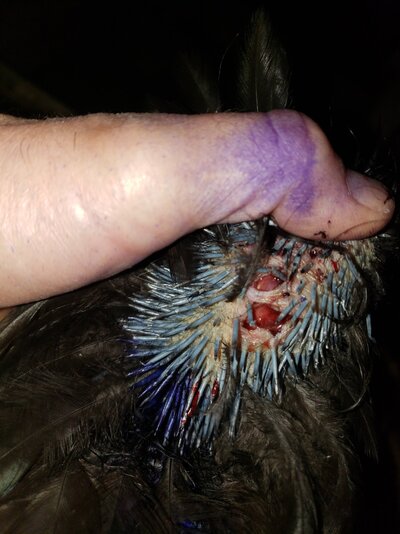T.R. Morris
Chirping
- Sep 6, 2017
- 11
- 3
- 54
At 1 a.m. tonight I interrupted some kind of animal attack. Likely raccoon. I was late in closing up the coop. My hen was squawking and laying still outside. She was missing a lot of feathers in a few areas, but the only serious wound was on the back of her neck. (See picture.) Initially sprayed the bloody areas with blu-kote then went inside for supplies. I gently rubbed away blood with clean washcloth soaked with warm water. She can walk and flap both wings, and her eyes move and dilate normally. Whew!! Now I had a headlamp to better investigate. Puncture wound on her neck went all the way through her thin skin in two adjacent places. Maybe 6 mm and 3 mm holes. Or a total round area of 1.2 cm. I soaked 2 Q tips with hydrogen peroxide put them on/in the wound. Not many bubbles. The skin around her neck is so loose it was moving right over the muscle. There doesn't appear to be any muscle damage. I sprayed it with blu-kote again and wrapped her in a clean towel in a closed off nesting box. I'm not sure if or how to cover this neck wound. Oral antibiotics? Help me out with replies including **knowledgeable medical advice** ONLY please. Thank you!




